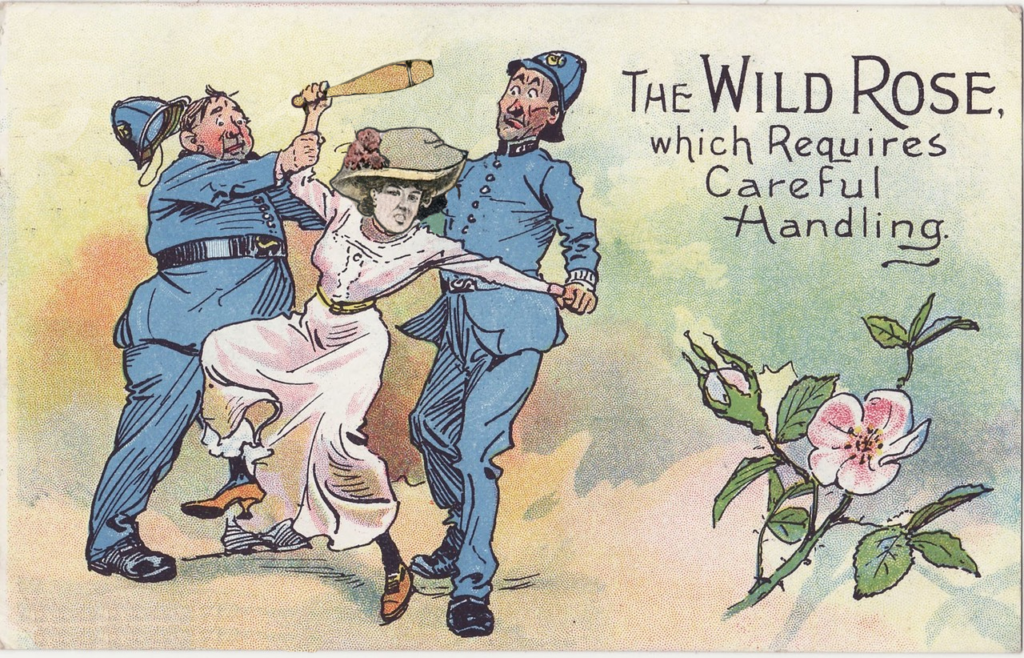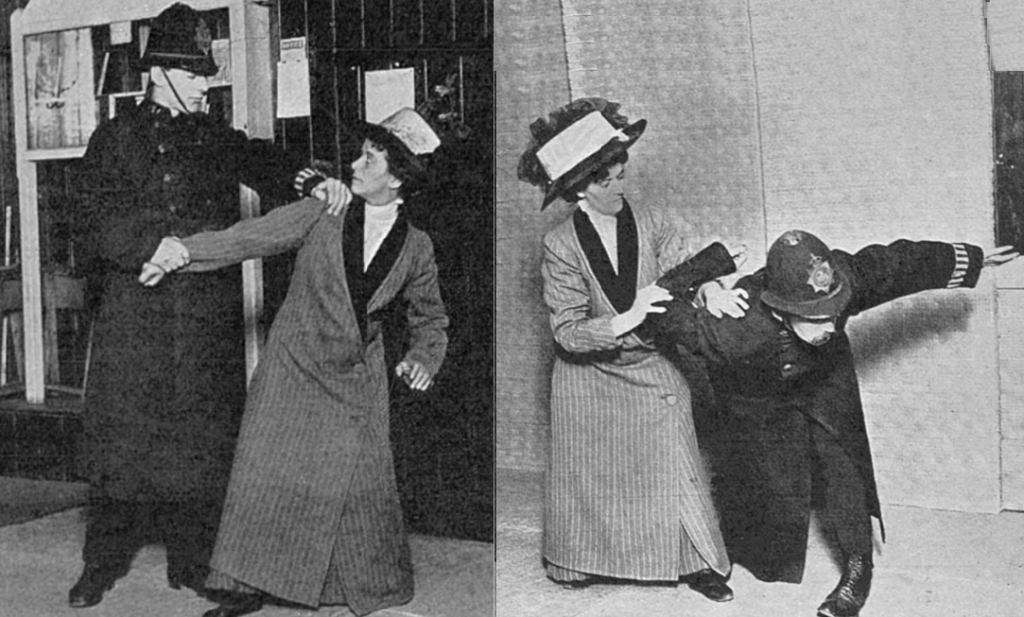- Originally published on the Bartitsu.org site on Thursday, 8th November 2018
Directed by Tony and Kathrynne Wolf, No Man Shall Protect Us: The Hidden History of the Suffragette Bodyguards (2018), written by Tony Wolf, offers a lucid and rousing yet sensitively balanced account of the role of the role of martial arts in the campaign of the Women’s Social and Political Union. The documentary, which is backgrounded by evocative piano music and songs of the era, looks back across the late-Victorian era to the 1900s, considering Edward William Barton-Wright’s introduction of jujitsu to Britain and its emergence in mainstream popular culture. The story is nicely accompanied by a wide range of contemporary photography, film and illustrations.

Much of action is set in the months following the passing of the Prisoners (Temporary Discharge for Ill-health) Act, 1913 under which suffragettes could be released from jail to recover sufficiently (watched by the police) in order to be recaptured and see out the remainder of their sentences. The Act signalled a cycle of releases and rearrests, the government toying with the released prisoners as a cat would taunt a mouse. Mrs Pankhurst was the most famous of mouse of all and she needed special protection: her team of jujitsu-trained supporters, known simply as ‘The Bodyguard’.

Lizzie Bourne, who is an experienced voiceover artist, presents to camera and, with her measured style of narration, sets the keynote to this documentary. Her gentle tone acts as a counterpoint to Debra Ann Miller’s fiery Mrs Pankhurst and Lynne Baker’s compelling yet intimidating jujitsu instructor Mrs Garrud. Excerpts from the play The Good Fight give a sense of the shape of the confrontations between the Bodyguard and the police – whom Mrs Pankhurst called ‘tools of the government’ – as well as offer an insight into how the story of the Bodyguard is celebrated today. The confrontation scenes also underline Tony’s argument that the Bodyguard fought two battles, ‘one at street level and the other as cogs in a well-oiled suffragette propaganda machine’.

The actors have been well selected. I particularly liked Scottie Caldwell’s depiction of Gertrude Harding, who gives us her account as she pours a cup of tea, a copy of The Suffragette in front of her. It’s a scene which reminds me of Godfrey Winn’s interview with Edith Garrud as well as Brian Harrison’s well-known recordings of suffragettes who drink tea and chat to him over cake about their experiences. There are some lovely details, such Gert and Kathrynne Wolf’s Janie Allen standing behind Mrs Pankhurst, deftly signalling information to each other.

While David Skvarla’s accent is a touch over-lilted, it was pleasing to see Chief Constable James Stephenson charismatically being given a meaningful place in the suffragette story. His perspective was not downplayed here as is so often the case in suffragette history, nor reduced to a faceless police report.
We also see the viewpoint of the government represented. The film which accompanies the Votes for Women exhibition at the Museum of London argues that forcible feeding did not improve the condition of hunger-striking women and even set them back. However, as Tony Wolf points out, prison officials were duty bound to preserve life, otherwise protestors would have died in their care. It was out of this predicament in which the government found itself, not to mention the bad press elicited by forcible feeding, that the Cat and Mouse Act emerged.

The documentary is not only a valuable account of the Bodyguard, with a discussion of modern parallels, but also shows that the ‘Jujutsuffragettes’ are not merely a niche subject within suffragette history. Rather, the documentary invites us to consider the wider symbolic impact of jujitsu on the women’s suffrage campaign. ‘The image of radical suffragettes being helplessly led, carried away or dragged by much larger police constables was central to the popular conception of the suffrage movement,’ Tony says, ‘Therefore, photographs of the petite Edith Garrud, seemingly defeating policemen with deft jujitsu locks, struck a powerfully transgressive chord.’ In that case, perhaps the police were in fact the tools of the suffragettes?

No Man Shall Protect Us is freely available for viewing via this link.

About the reviewer: Since graduating from Birkbeck College, London in 2008, Emelyne now works as a freelance writer specialising in the 19th century. Her books include “Masculinity, Crime and Self-Defence in Victorian Literature: Duelling with Danger” (2010), which looks at crime-fighting from the seldom-explored viewpoint of the civilian city-goer. A sister volume, “Femininity, Crime and Self-Defence in Victorian Literature and Society: From Dagger-Fans to Suffragettes” was published in 2013.
Emelyne is currently writing her next book, “Kitty and the Cats: Mrs Pankhurst’s Suffragette Bodyguard and the London Police”, which tells the story of Emily Katherine Willoughby Marshall, a member of the ‘Bodyguard’. She became Emmeline Pankhurst’s close friend and was the chief organiser of her memorial, standing today in Victoria Tower Gardens, Westminster.
Emelyn is a regular contributor to the Times Literary Supplement and History Today, and has appeared on BBC television and radio. She is the current Chairman of the HG Wells Society.
Further information can be found at www.emelynegodfrey.com
